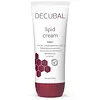What's inside
What's inside
 Key Ingredients
Key Ingredients

No key ingredients
 Benefits
Benefits

No benefits
 Concerns
Concerns

 Ingredients Side-by-side
Ingredients Side-by-side

Water
Skin ConditioningPentylene Glycol
Skin ConditioningCetearyl Isononanoate
EmollientGlycerin
HumectantSimmondsia Chinensis Seed Oil
EmollientGlyceryl Stearate
EmollientDicaprylyl Carbonate
EmollientPolyglyceryl-3 Methylglucose Distearate
EmulsifyingButyrospermum Parkii Butter
Skin ConditioningCetearyl Alcohol
EmollientGlyceryl Stearate Citrate
EmollientMagnesium Aluminum Silicate
AbsorbentPhytosphingosine
Skin ConditioningCholesterol
EmollientCeramide AP
Skin ConditioningCeramide NP
Skin ConditioningSorbitol
HumectantCaprylic/Capric Triglyceride
MaskingStearic Acid
CleansingPalmitic Acid
EmollientTocopherol
AntioxidantTocopheryl Acetate
AntioxidantGalactoarabinan
Xanthan Gum
EmulsifyingPolyglyceryl-2 Dipolyhydroxystearate
Skin ConditioningSodium Stearoyl Lactylate
EmulsifyingSodium Gluconate
Skin ConditioningCitric Acid
BufferingSodium Hydroxide
BufferingWater, Pentylene Glycol, Cetearyl Isononanoate, Glycerin, Simmondsia Chinensis Seed Oil, Glyceryl Stearate, Dicaprylyl Carbonate, Polyglyceryl-3 Methylglucose Distearate, Butyrospermum Parkii Butter, Cetearyl Alcohol, Glyceryl Stearate Citrate, Magnesium Aluminum Silicate, Phytosphingosine, Cholesterol, Ceramide AP, Ceramide NP, Sorbitol, Caprylic/Capric Triglyceride, Stearic Acid, Palmitic Acid, Tocopherol, Tocopheryl Acetate, Galactoarabinan, Xanthan Gum, Polyglyceryl-2 Dipolyhydroxystearate, Sodium Stearoyl Lactylate, Sodium Gluconate, Citric Acid, Sodium Hydroxide
Ingredients Explained
These ingredients are found in both products.
Ingredients higher up in an ingredient list are typically present in a larger amount.
Cetearyl alcohol is a mixture of two fatty alcohols: cetyl alcohol and stearyl alcohol. It is mainly used as an emulsifier. Emulsifiers help prevent the separation of oils and products. Due to its composition, it can also be used to thicken a product or help create foam.
Cetearyl alcohol is an emollient. Emollients help soothe and hydrate the skin by trapping moisture.
Studies show Cetearyl alcohol is non-toxic and non-irritating. The FDA allows products labeled "alcohol-free" to have fatty alcohols.
This ingredient is usually derived from plant oils such as palm, vegetable, or coconut oils. There is debate on whether this ingredient will cause acne.
Due to the fatty acid base, this ingredient may not be Malassezia folliculitis safe.
Learn more about Cetearyl AlcoholCitric Acid is an alpha hydroxy acid (AHA) naturally found in citrus fruits like oranges, lemons, and limes.
Like other AHAs, citric acid can exfoliate skin by breaking down the bonds that hold dead skin cells together. This helps reveal smoother and brighter skin underneath.
However, this exfoliating effect only happens at high concentrations (20%) which can be hard to find in cosmetic products.
Due to this, citric acid is usually included in small amounts as a pH adjuster. This helps keep products slightly more acidic and compatible with skin's natural pH.
In skincare formulas, citric acid can:
While it can provide some skin benefits, research shows lactic acid and glycolic acid are generally more effective and less irritating exfoliants.
Most citric acid used in skincare today is made by fermenting sugars (usually from molasses). This synthetic version is identical to the natural citrus form but easier to stabilize and use in formulations.
Read more about some other popular AHA's here:
Learn more about Citric AcidThis is the synthetic salt of gluconic acid, a form of PHA and mild exfoliant.
It is mainly used to stabilize oil and butter formulations from going bad. Sodium gluconate is a humectant, pH regulator, and chelating agent.
Chelating agents help neutralize unwanted metals from affecting the formulation.
Sodium gluconate is water-soluble.
Learn more about Sodium GluconateWater. It's the most common cosmetic ingredient of all. You'll usually see it at the top of ingredient lists, meaning that it makes up the largest part of the product.
So why is it so popular? Water most often acts as a solvent - this means that it helps dissolve other ingredients into the formulation.
You'll also recognize water as that liquid we all need to stay alive. If you see this, drink a glass of water. Stay hydrated!
Learn more about Water